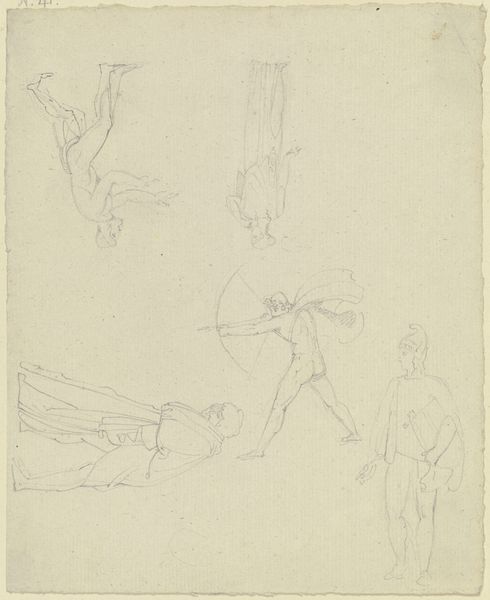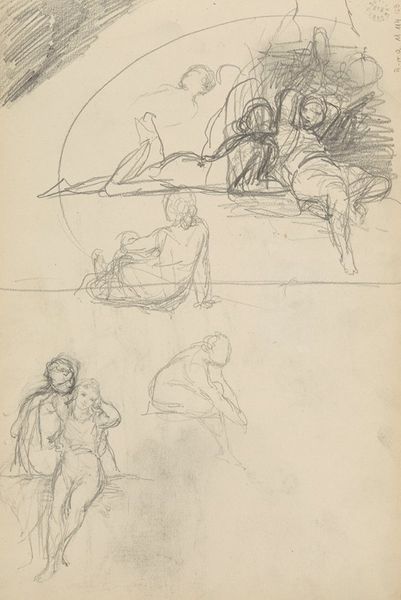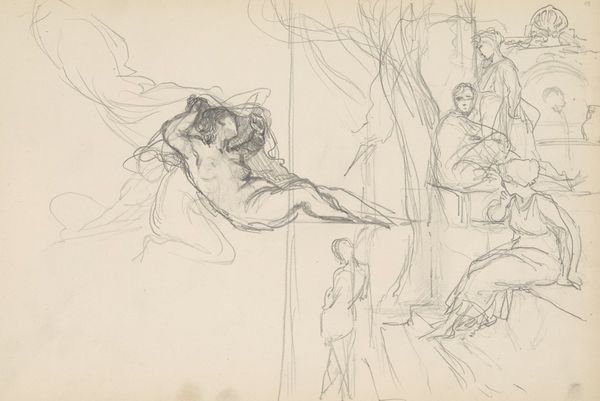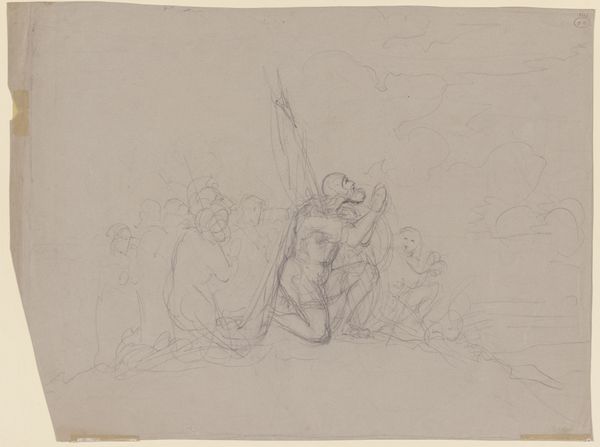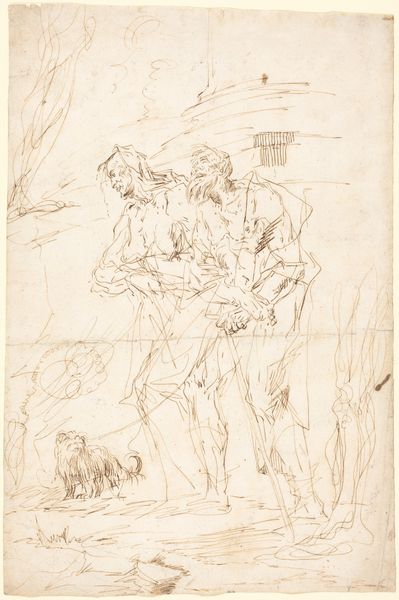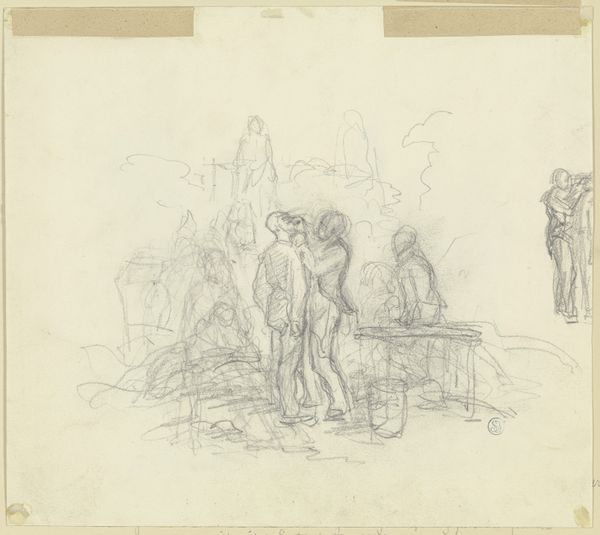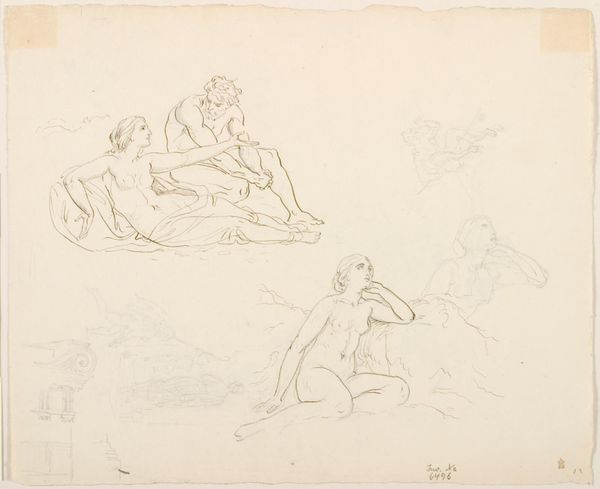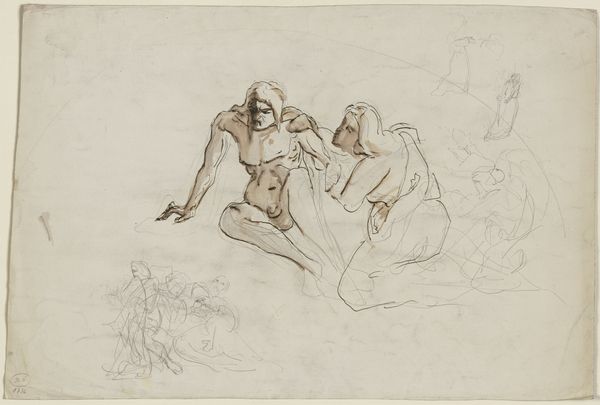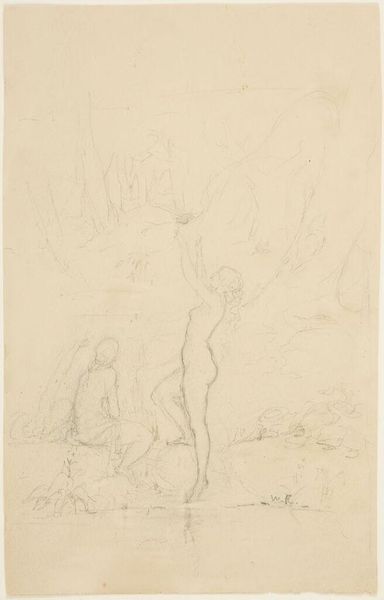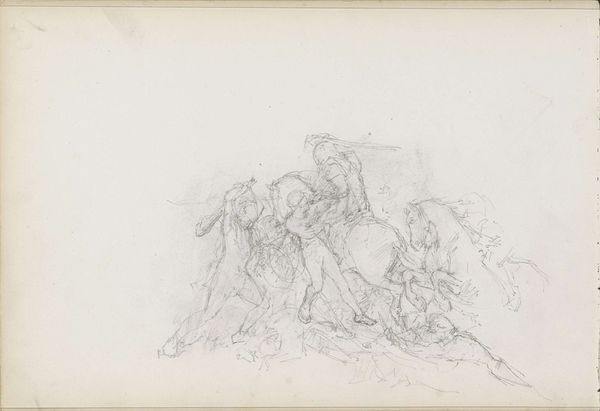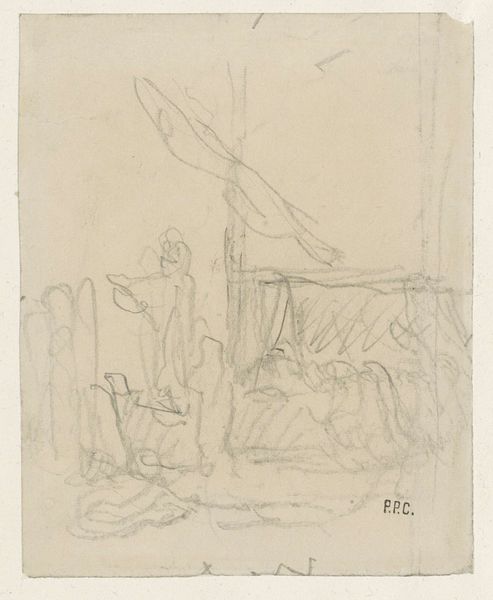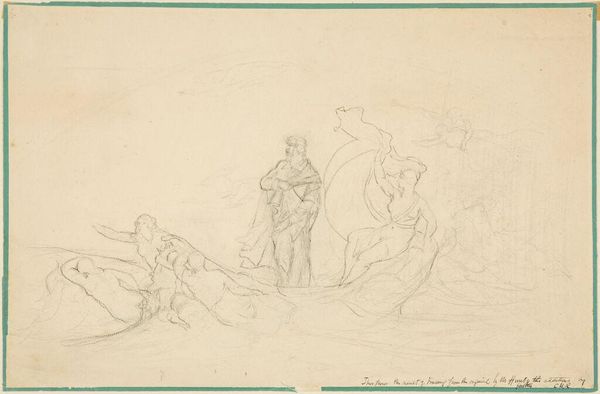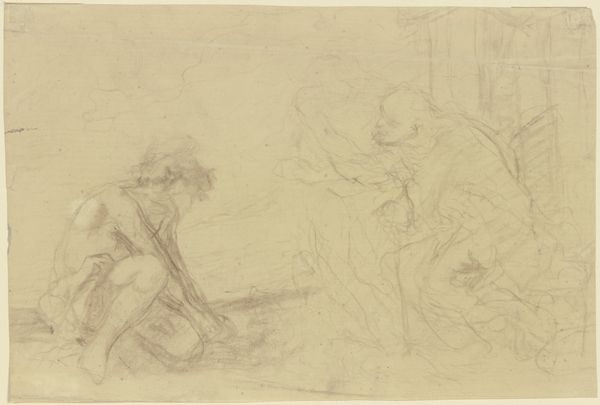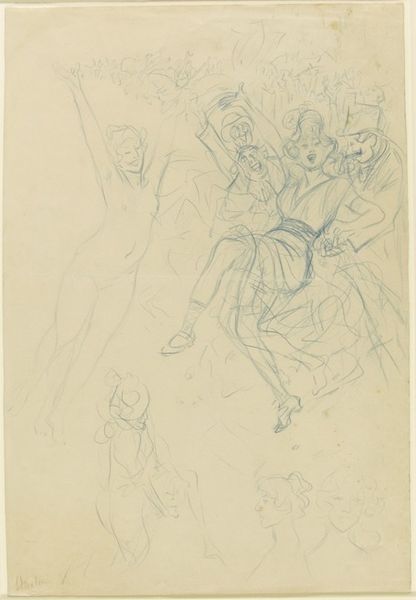
drawing, paper, pencil
#
portrait
#
drawing
#
paper
#
pencil
#
genre-painting
#
academic-art
Copyright: Public Domain: Artvee
Curator: We have here Henryk Siemiradzki's "lużane szkice, m.in. postaci z amorkiem, postaci na rusztowaniach," created in 1883, a pencil drawing on paper. Its unfinished nature grants a certain charm, don't you think? Editor: I agree. The sketchy lines almost give it a sense of motion. There's a cluster of figures, and a single figure atop what seems to be scaffolding, but without any background context, it’s a little hard to decipher the forms. What do you make of the composition itself? Curator: Let us focus on the relational elements. Notice the linear quality dominating the image: lines forming shapes but stopping short of defining forms, juxtaposing elements like light and dark, weight and levity. The strategic placement of these linear elements and how they interrelate is the crux of this work's success, regardless of representational clarity. See how the figure on the scaffolding pierces the upper quadrant? Editor: I do, it draws your eye up, making it seem larger and dominant. Is the absence of shading also relevant here? Curator: Precisely. Its very absence becomes a tool. Consider how shading might obscure, rendering some details as more or less valuable. It invites our eyes to linger on specific forms in order, which seems not to be Siemiradzki's intention. It's as if he wants to display it equally without pushing the visual narrative, the lines exist more like boundaries, separating ideas from blending it. It allows the viewer's mind free rein. Editor: So the lack of traditional artistic tools such as color or heavy form gives it a non-hierarchical feel and perhaps allows for broader interpretations of the figures and scenes. Thank you for this insightful experience. Curator: It has been my pleasure. Now you see that the work's 'success' can be measured through intrinsic methods by viewing structural elements within art rather than referencing external associations alone.
Comments
No comments
Be the first to comment and join the conversation on the ultimate creative platform.
